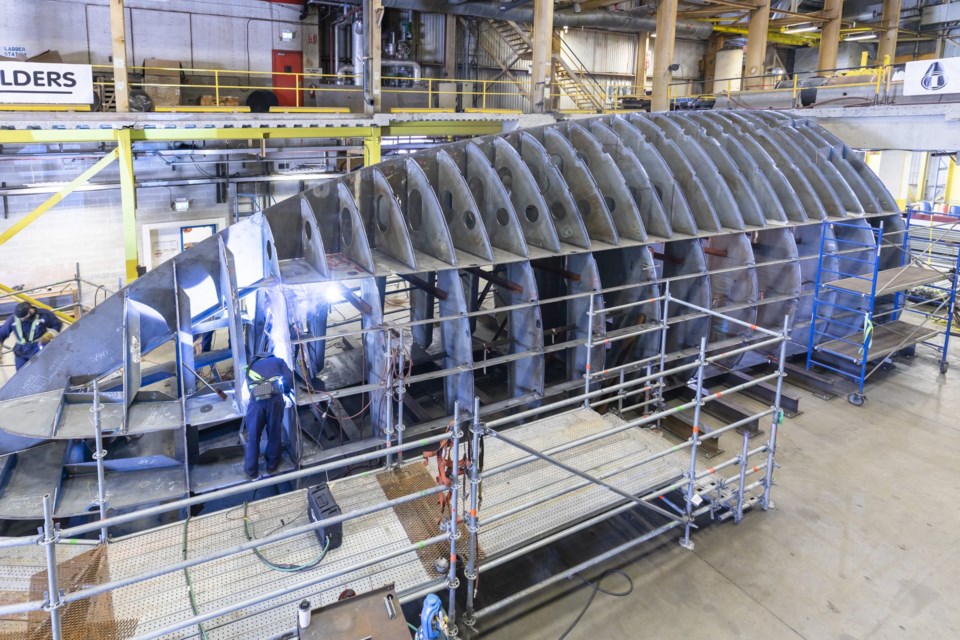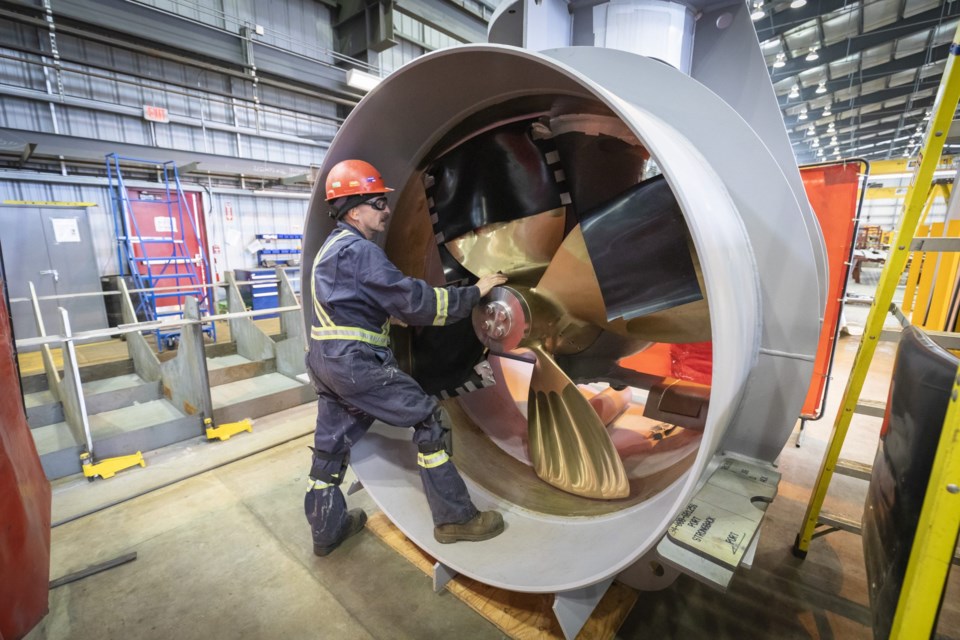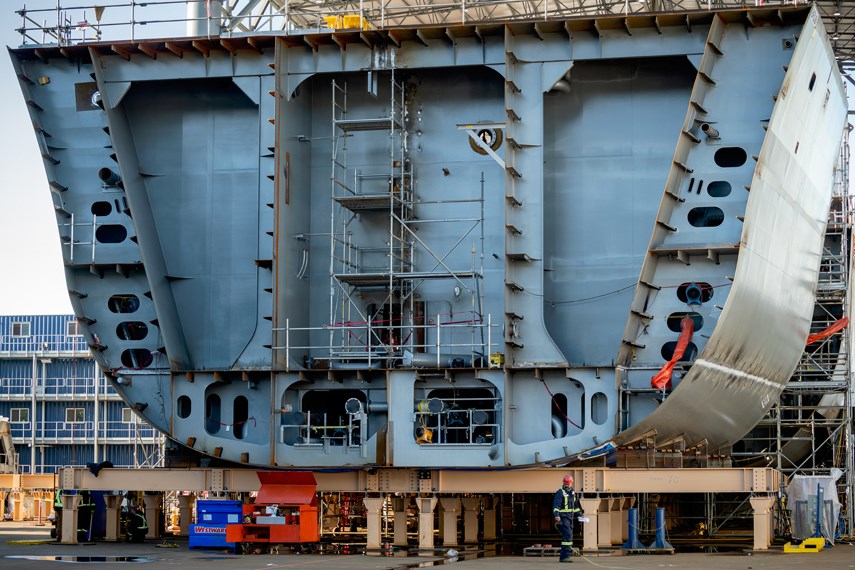North Vancouver’s Seaspan Shipyards has signed a multibillon-dollar deal with the federal government that marks the formal go-ahead to build two massive joint support ships for the Royal Canadian Navy, the government announced Monday.
The contract includes $2.4 billion to build the two Protecteur-class support ships – a figure that rises to $3.1 billion when manufacturing of additional spare components for both the joint support ship and other navy vessels is factored in.
The first ship is expected to be delivered in 2023 and the second ship is expected to be finished in 2025.
The total joint support ship budget – which includes design and engineering work already completed at Seaspan, project management and contingency costs – is now pegged at $4.1 billion.
The two joint support ships – along with a polar icebreaker – were the centrepieces of a $8-billion non-combat package originally awarded to Seaspan by the federal government in 2011 after a competitive bidding process.
This week's milestone is a significant one for the North Vancouver shipyard.
“It’s a really big deal,” said Amy McLeod, vice-president of corporate affairs and external communications for Seaspan. “It’s an important project for us. This is the big one.”
Early work on the joint support ships has actually been underway at the shipyard for the past two years.
In March 2017, the government of Canada signed a $230-million contract with Seaspan for design and engineering of the two 174-metre vessels.
After the signing of another $66.6-million contract two years ago, the shipyard has been busy building and assembling massive steel blocks that will form the hull and superstructure of the first support ship.
When completed, the joint support ships – which carry fuel, spare parts and medical supplies to Canadian warships – will be the longest naval ships ever built in Canada.
“It is a huge vessel,” said McLeod – one that will be increasingly visible at the North Vancouver shipyard as work progresses.

The project is expected to employ more than 1,000 people at the shipyard.
The navy has been without a permanent support ship since 2015, when it was forced to retire its existing vessels because of a fire and corrosion issues. It is currently leasing a temporary ship, the MV Asterix, built by Davie shipyard in Quebec.
The revised $4.1-billion budget for the joint support ships - originally pegged at $2.3 billion – is $700,000 more than the most recent budget estimates, which had put the total cost of the two ships at $3.4 billion.
Seaspan marked a milestone in early work on the first joint support ship in January with a keel laying ceremony attended by Vice-Admiral Art McDonald, commander of the Royal Canadian Navy.
In recent months, the shipyard has had to adapt to COVID-19, including careful planning to take numbers of workers in particular sections of the shipyard into account.

The construction contract also comes days after Seaspan announced it is teaming up with an Ontario-based shipyard Heddle Shipyards, in an attempt to win back the contract for the polar icebreaker John Diefenbaker.
Under the deal announced between the two companies, if the partnership is successful in winning the bid, Heddle would build some modules containing ship systems at its three Ontario shipyards that would be shipped to North Vancouver for final assembly in the icebreaker at the local shipyard.
The large icebreaker was originally part of the non-combat package awarded to Seaspan in 2011. But last year, Ottawa took that off the company’s order book – replacing it with a series of smaller multi-purpose vessels – and announced it was reopening bidding to include other shipyards, notably Davie Shipyard in Quebec.
Davie has already provided Ottawa with the interim naval supply ship – which it is leasing to the government – while the government waits for Seaspan to build the massive joint support ships.
The Quebec shipyard has also been awarded a $610-million contract to build three "interim icebreakers" for the Coast Guard.
In a recent interview Seaspan CEO Mark Lamarre said the company is still aggressively pursuing the icebreaker contract.
Seaspan is also expected to launch the third of its federal fisheries vessels within the next month.





